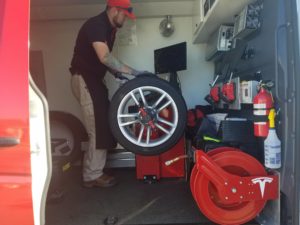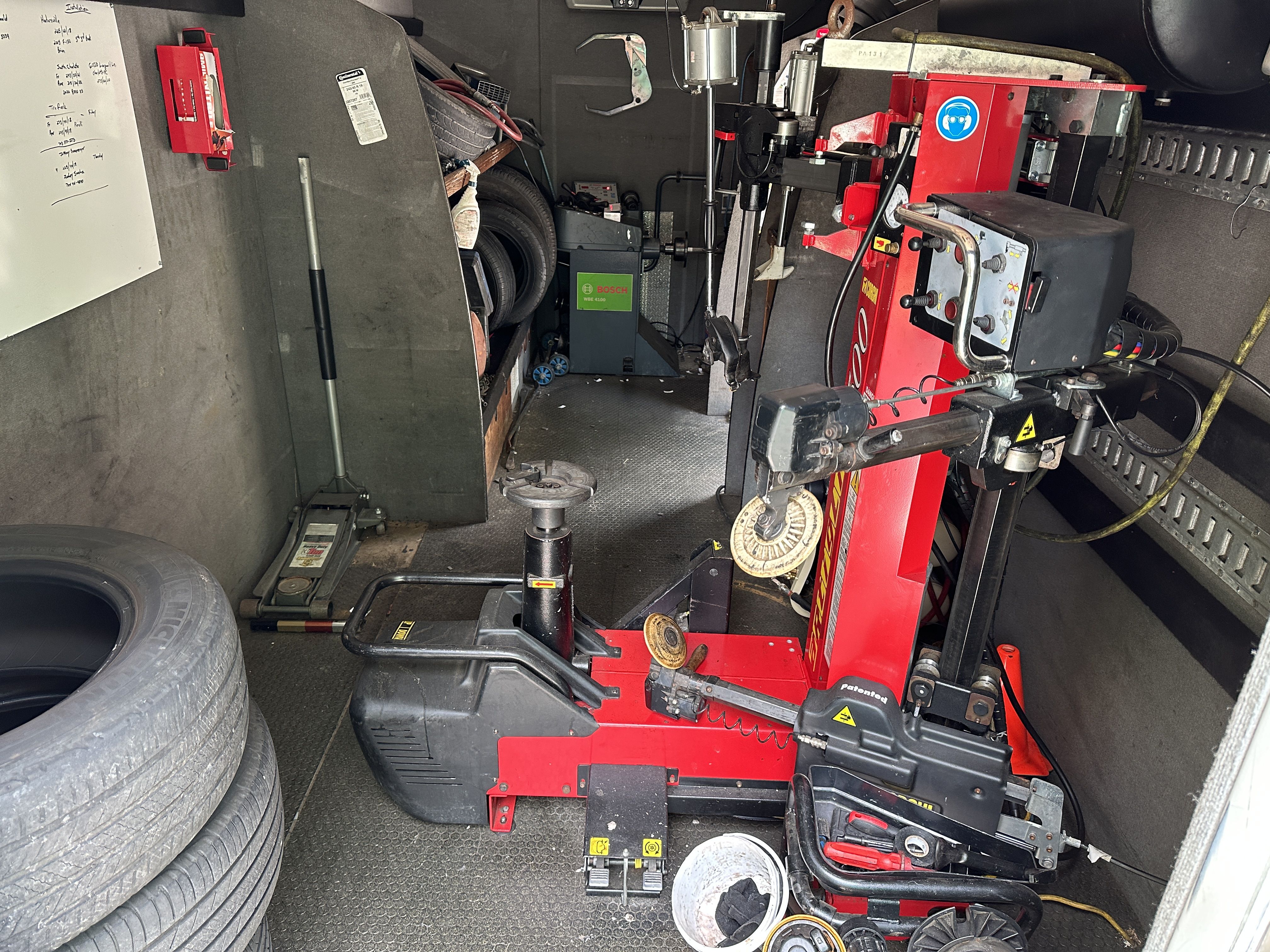Tire Solution: Proven Techniques for Optimal Tire Upkeep and Care
From ensuring appropriate tire stress to normal rotation and positioning, there are tried and tested methods that can substantially expand the life expectancy of your tires and boost overall driving experience. Let's dig right into the world of tire service and discover the keys to maintaining your tires in top-notch shape for the lengthy haul - Mobile Tire Replacement Las Vegas.
Importance of Tire Pressure
Appropriate tire stress is a critical consider making certain optimum vehicle performance and security when driving. Maintaining the recommended tire stress degrees supplied by the manufacturer provides numerous advantages. To start with, adequate tire pressure promotes far better gas efficiency, as under-inflated tires can lead to increased rolling resistance, triggering the engine to work harder and take in more fuel. Second of all, appropriate tire stress makes certain even walk wear, boosting tire longevity and saving cash over time by delaying the demand for premature substitutes. Additionally, appropriately blew up tires add to improved handling and stopping abilities, essential for secure driving in numerous road problems. Over-inflated tires, on the other hand, can cause decreased grip and a harsher experience. Conversely, under-inflated tires are susceptible to getting too hot, which can cause crashes and blowouts. Consistently inspecting and readjusting tire pressure, specifically soon trips, is an easy yet effective way to enhance automobile performance, prolong tire life-span, and prioritize security when traveling.
Tire Turning Standards
When taking into consideration tire turning standards, it is vital to recognize the relevance of this upkeep job in maximizing tire lifespan and maintaining optimum lorry efficiency. Tire turning includes altering the position of each tire on a vehicle to make sure also walk wear. Front tires have a tendency to wear more promptly than back tires because of steering forces, making normal rotation critical for well balanced wear patterns. The suggested rotation pattern varies depending upon whether an automobile is front-wheel, rear-wheel, all-wheel, or 4x4. Commonly, tires should be turned every 5,000 to 7,500 miles, or as recommended in the vehicle guidebook. Ignoring tire turning can cause irregular wear, impacting handling, traction, and possibly compromising lorry safety and security. By sticking to More Bonuses appropriate turning guidelines, motorists can extend the life of their tires, boost fuel effectiveness, and boost total driving experience. Normal turning is a basic yet effective upkeep practice that contributes considerably to tire durability and car efficiency.

Advantages of Wheel Alignment
Ensuring appropriate wheel placement after tire rotation is important for keeping balanced wear patterns and optimizing vehicle performance. Furthermore, proper wheel placement helps to expand the life-span of your tires. Misaligned wheels can cause unequal tire wear, leading to premature tire replacement and increased upkeep prices.

Tire Footstep Depth Inspect
Performing a normal inspection of tire tread deepness is necessary for preserving risk-free driving problems and extending the lifespan of your tires. Uneven tread wear can indicate concerns with tire placement, stress, or suspension, highlighting the relevance of regular step deepness checks. By including tire walk depth checks into your regular maintenance schedule, you can drive with self-confidence understanding that your why not try this out tires are in top problem.
Seasonal Tire Assessment
Seasonal tire inspection is a basic element of tire upkeep that guarantees tires are ready to face the obstacles postured by various climate problems. In prep work for wintertime, it is essential to inspect the tire pressure consistently as chilly temperatures can create tire stress to drop. By carrying out regular seasonal tire evaluations, motorists can extend tire life expectancy, improve fuel performance, and most significantly, make sure a safe and secure driving experience in varying weather conditions.
Final Thought
Finally, preserving appropriate tire pressure, rotating tires regularly, lining up wheels appropriately, keeping an eye on step depth, and performing seasonal inspections are necessary techniques for optimum tire treatment. By adhering to these verified approaches, chauffeurs can ensure their tires last much longer, carry out far better, and contribute to total vehicle security. It is necessary to prioritize tire maintenance to avoid mishaps, improve fuel performance, and prolong the life expectancy of tires.
Sufficient tire stress promotes far better fuel efficiency, as under-inflated tires can lead to boosted rolling resistance, creating the engine to work more challenging and eat even more fuel.When thinking about tire turning guidelines, it is vital to understand the relevance of this upkeep task in making the most of tire life-span and maintaining ideal lorry efficiency. Seasonal tire examination is a fundamental facet of tire maintenance that makes certain tires are all set to face the obstacles presented by various climate problems. By conducting regular seasonal tire assessments, drivers can prolong tire life-span, boost gas performance, and most importantly, ensure a safe driving experience in varying weather condition conditions.
In verdict, helpful hints preserving correct tire stress, turning tires on a regular basis, aligning wheels properly, keeping track of step deepness, and conducting seasonal assessments are important techniques for optimum tire care.